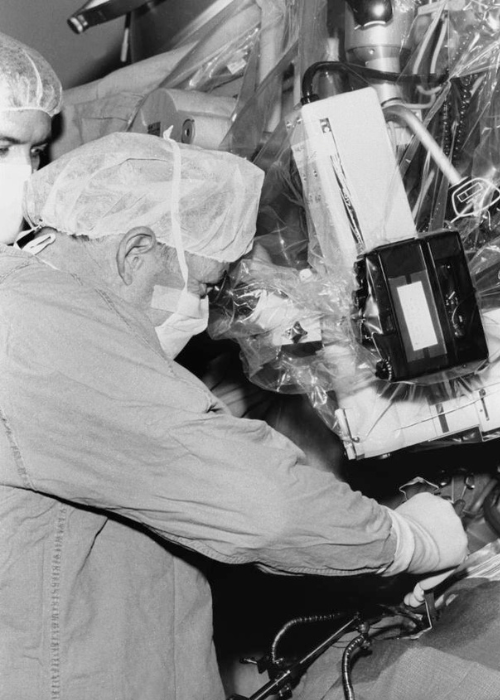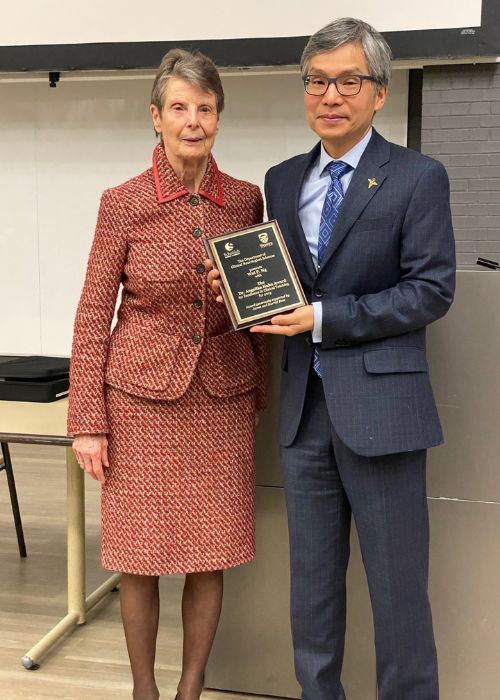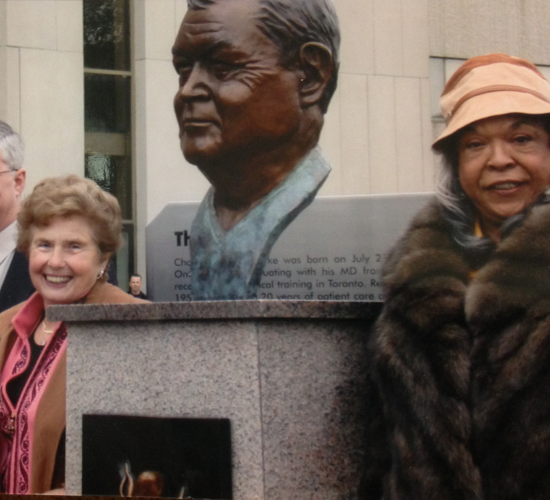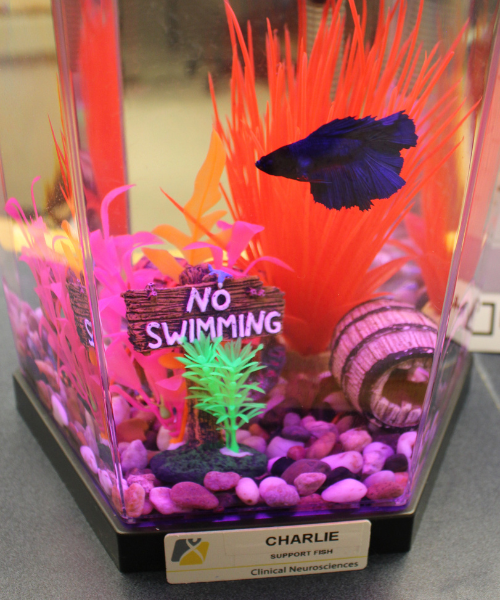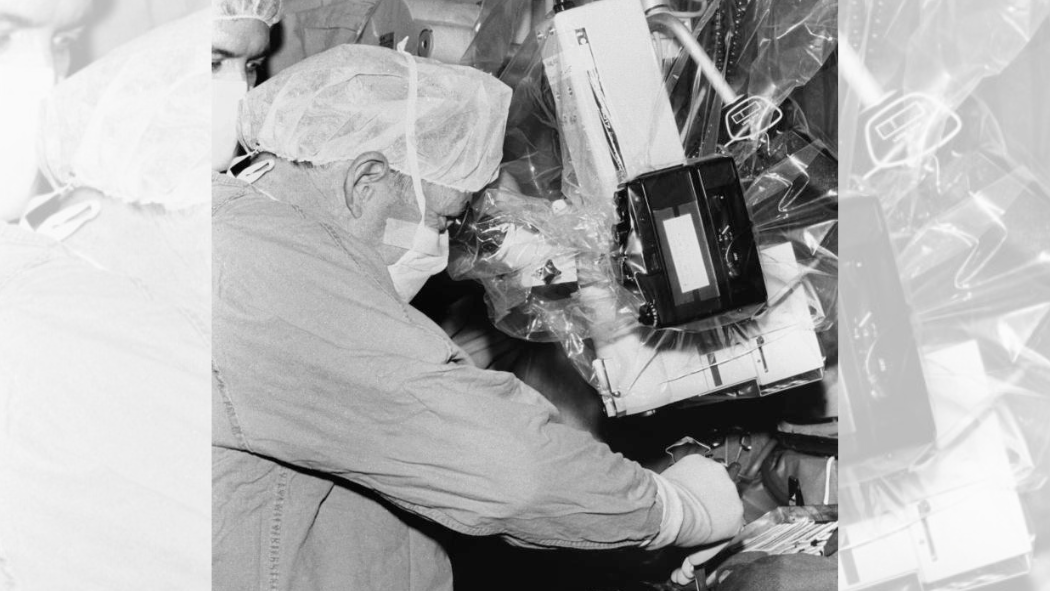
July 13, 2023
On the 7th floor of London Health Sciences Centre’s University Hospital, on the counter at the nursing station in the Clinical Neurological Sciences (CNS) Inpatient Unit, there is an aquarium with a Siamese fighting ‘support’ fish named Charlie in recognition of the contributions of Dr. Charles Drake in advancing neurological care.
It’s a fitting tribute to a man who spent his career fighting to save lives and to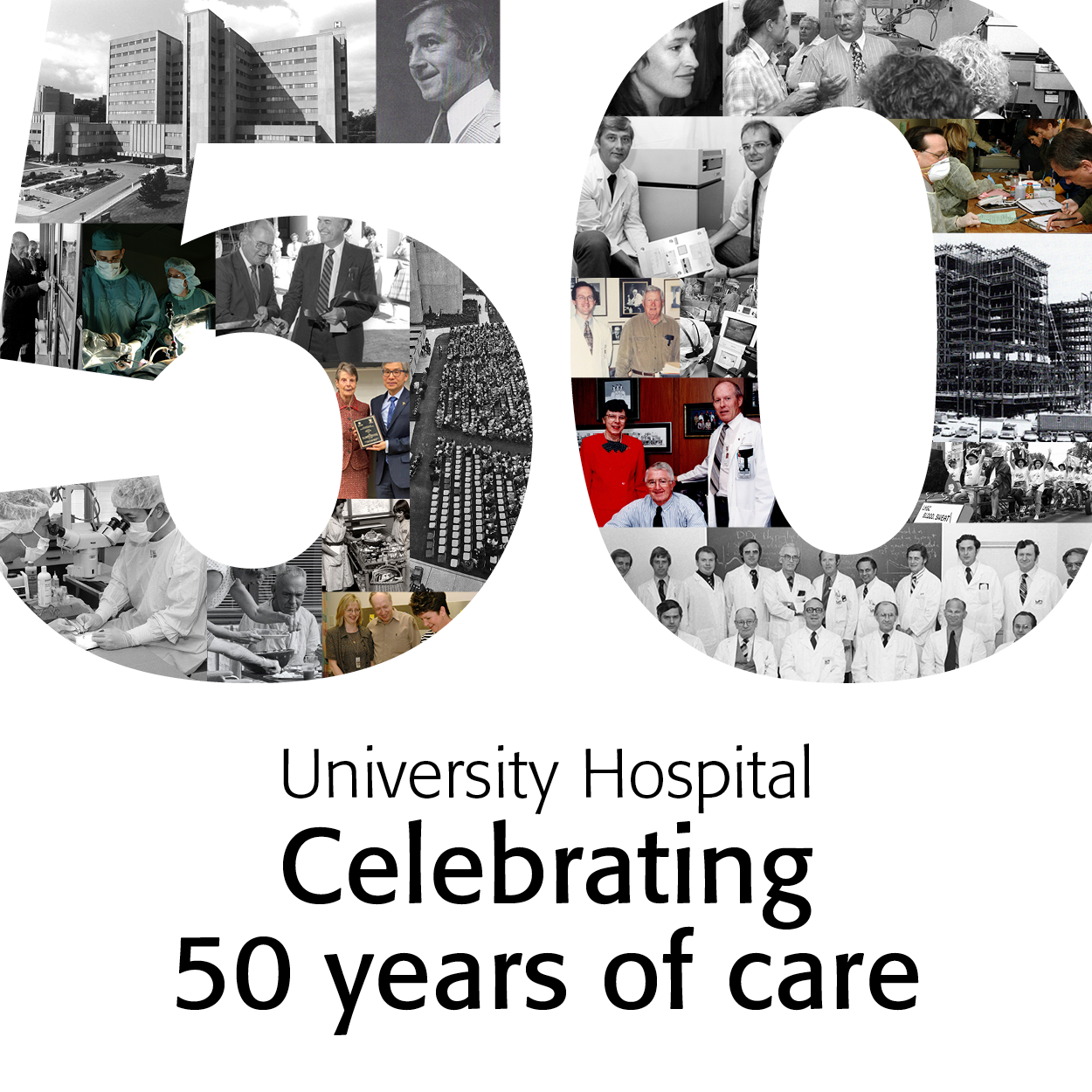 advance neurological medicine, ultimately achieving worldwide renown, a spot in the Canadian Medical Hall of Fame in 1994, and promotion to Companion of the Order of Canada in 1998, shortly before his death at the age of 78.
advance neurological medicine, ultimately achieving worldwide renown, a spot in the Canadian Medical Hall of Fame in 1994, and promotion to Companion of the Order of Canada in 1998, shortly before his death at the age of 78.
“In surgery, one is in a competition, both with the disease being treated, and with others who, like you, are trying to find solutions to the same problems.”
Those were among the words of wisdom that Dr. Drake, London’s first neurosurgeon, often shared with colleagues, residents and trainees at University Hospital (UH), according to former colleague, Dr. Stephen Lownie.
Dr. Lownie, Canada’s first ‘hybrid’ neurosurgeon trained in both neurosurgery and interventional neuroradiology, started at UH as a resident in 1983 and joined the full-time staff in 1992. Now living in Nova Scotia where, he retains a connection with the department and is writing a book about Dr. Drake’s legacy. Dr. Lownie recalls his mentor as a humble, inspiring and approachable role model who treated everyone the same.
“His single biggest accomplishment was in finding, and then perfecting, the cure for the brain’s most difficult and dangerous brain aneurysm located at the top of the basilar artery in front of the brainstem,” Dr. Lownie says. It is “one of, if not the, most forbidding areas for performing brain surgery.”
Leading research in neurological sciences
In looking back at 50 years of care in CNS – which specializes in diseases and disorders of the brain, spinal cord and nerves – there are easily a dozen physicians who were, or are, leaders in their fields. Dr. Henry Barnett – who first met Dr. Drake in England and then later co-founded CNS with him – was the first in the world to prove conclusively that aspirin reduces the future risk of stroke. He, along with other neurologists and neurosurgeons around the world, also conducted trials that concluded that surgery for narrowed carotid arteries in the neck helps prevent future stroke.
Dr. Vladimir Hachinski helped popularize the need for acute care units to treat patients with acute stroke and showed that many cases of dementia are caused by small imperceptible strokes. Dr. David Spence devoted his career to the prevention of stroke and founded the Stroke Prevention & Atherosclerosis Research Centre. He pioneered using ultrasound technology to measure the health of the carotid artery to determine the effectiveness of preventative treatment. Both are also recipients of the Order of Canada.
Drs. Samuel Wiebe and Warren Blume, both epilepsy neurologists, and neurosurgeon Dr. John Girvin conducted the first trial which demonstrated that surgery helps individuals with seizures much more than combination drug therapy. More than any other single study, this discovery led to improvements in epilepsy care throughout the world.
Drs. Greg Cairncross and David MacDonald were first in the world to demonstrate that chemotherapy could control a particular type of malignant brain tumour, giving hope for the first time to patients. Dr. Arthur Hudson created the first specialty clinic for the care of persons with amyotrophic lateral sclerosis (ALS), also known as Lou Gehrig’s disease, in Canada. Neuroradiologist Dr. Allan Fox performed Canada’s first endovascular coiling brain aneurysm treatment in which a fine woven platinum wire is inserted and ‘coiled’ inside an aneurysm to seal it off. This type of less invasive surgery has revolutionized neurosurgery.
In addition, CNS has supported the education of many neurologists and neurosurgeons, including Dr. Roberta Bondar, Canada’s first female astronaut. This commitment to education is supported by physicians such as Dr. Angelika Hahn, a clinical teacher with a legacy of unwavering passion for clinical neurological science, who has a teaching award named after her.
Joining neurology and neurosurgery was a new approach
And it’s not just the caliber of the all the firsts that makes UH’s CNS leading edge for its time. It is the actual structure of the unit – UH was only the second in Canada to bring neurology and neurosurgery together in one department. First envisioned by Drs. Barnett and Drake before UH opened in September 1972, and then subsequently moved to UH from Victoria Hospital where it was initially launched, this approach promoted significant cooperation between neurology, neurosurgery and other clinicians involved in patients with neurological disorders such as neuroradiologists and neuropathologists. The CNS team has long been a diverse one that includes nurses, nurse practitioners, physiotherapists, occupational therapists, social workers, pharmacists and speech language pathologists.
And this teamwork ultimately improved patient care, says Dr. Paul Cooper, a neurologist who trained at UH in the mid-1970s and later joined the full-time staff in 1981. A former chair/chief of the department, he now cares for patients in the CNS’s Dr. John H. Kreeft Headache Clinic.
The success of this structure went far beyond cooperation. “We got along as a group because [Dr. Barnett] and [Dr. Drake] were such great personal friends,” says Dr. Cooper. “And I think that transferred over into the personality of the department. There was just that sense that you were going to get along because you were a family.”
A true team effort
Marianne Lee, who supported patients and their families for three decades as a social worker before retiring from CNS in 2019, agrees that “family” is the best word to describe CNS.
Everyone from the clerks and cleaning staff to health care professionals and doctors, all worked together towards a common goal of excellence in patient care. But they also supported each other and came together in difficult times, including when social workers and nurses from CNS and other units organized a memorial service for a patient who was treated at UH for three years before he died at the age of 21.
“It affected pretty much everybody on the neurosurgical service,” she says, and the service was a way to honour the young man and support those who cared for, and about, him.
It’s been five years since Lee retired but she and a group of former colleagues still get together for breakfast on a regular basis. Deciding to retire was difficult and five years later, she still misses the people she worked with.
“We always said we had the best of the best.”

